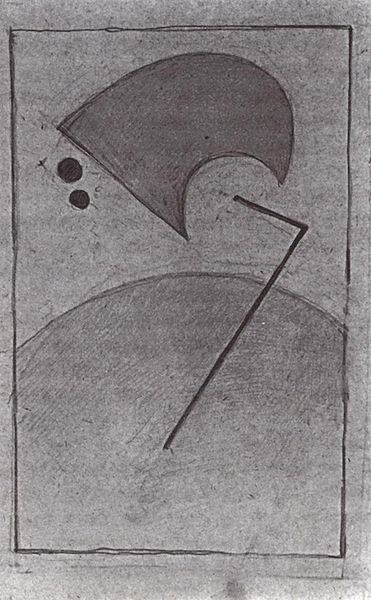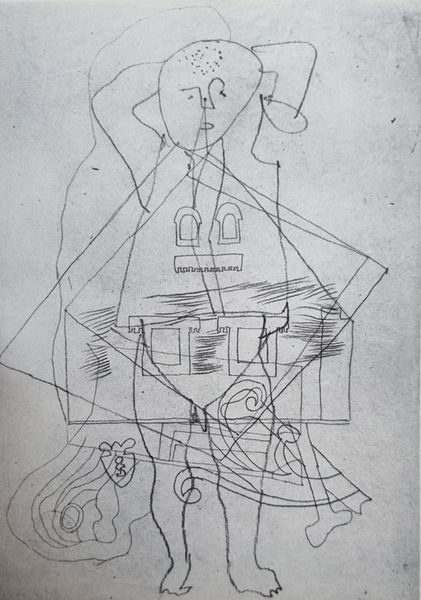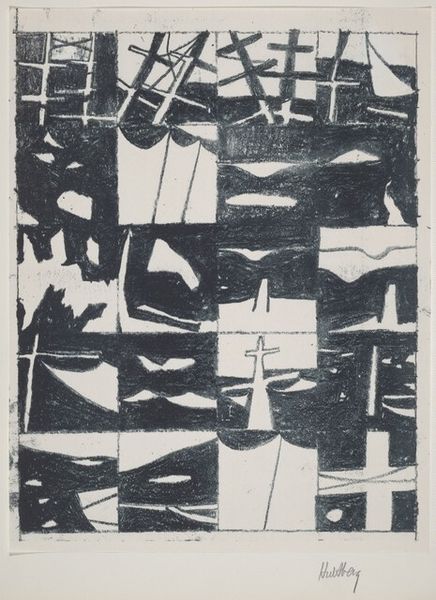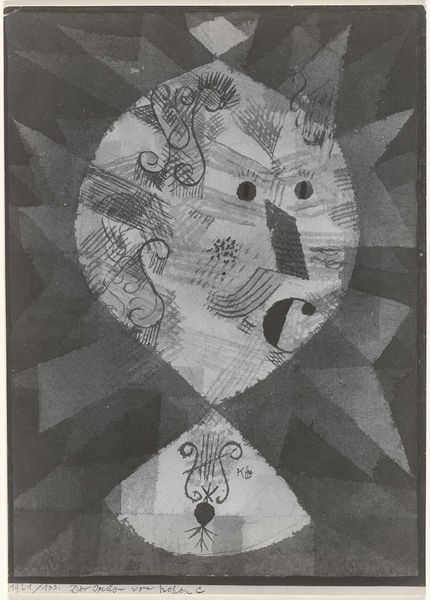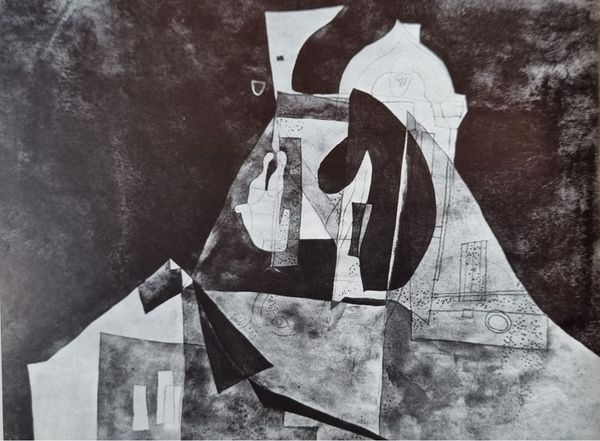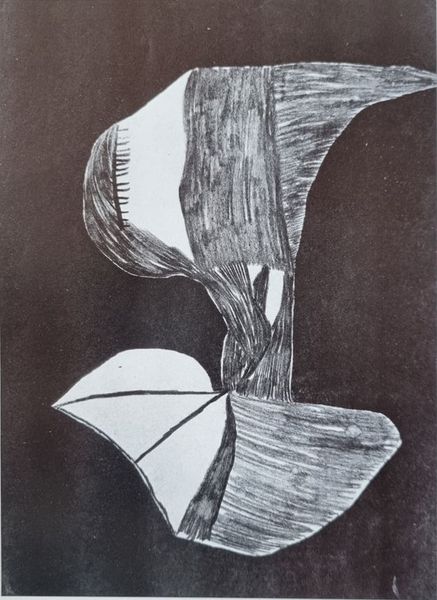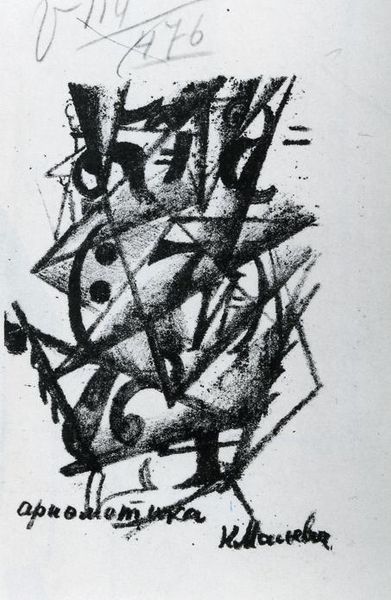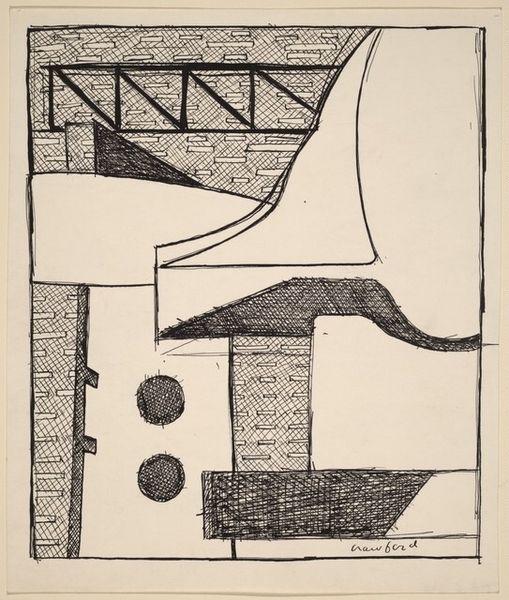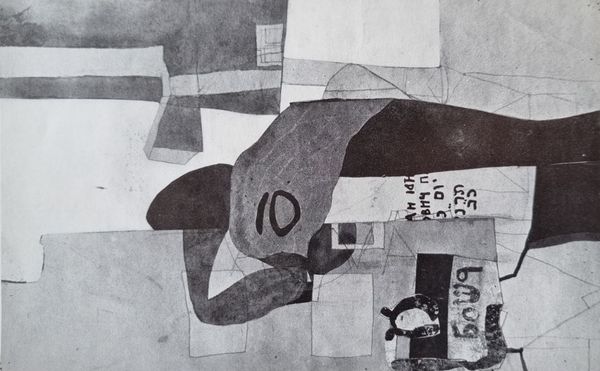
drawing, paper, graphite
#
drawing
#
cubism
#
amateur sketch
#
light pencil work
#
quirky sketch
#
pencil sketch
#
incomplete sketchy
#
paper
#
pencil drawing
#
geometric
#
expressionism
#
rough sketch
#
abstraction
#
line
#
graphite
#
sketchbook drawing
#
cityscape
#
quick sketch
#
fantasy sketch
Copyright: Public domain
This is "Reflecting Houses" by Lajos Vajda, made in 1939. It's an etching, a printmaking process that demands both physical labor and chemical precision. Look closely, and you'll notice the intricate lines, which weren’t drawn directly. Instead, Vajda would have coated a metal plate with a waxy, acid-resistant substance, then scratched an image into it with a sharp needle. This exposes the metal, which is then submerged in acid. The longer it sits, the deeper the lines are etched, influencing the darkness of the final print. The act of etching and printing is inherently reproductive, yet each print carries subtle variations, making it unique. Notice how the stark contrast captures a dreamlike quality. The houses, mirrored and fragmented, hint at the social disruptions of the time. Ultimately, understanding the labor and skill involved in etching gives us a richer appreciation. It reminds us that even seemingly simple images are born from a complex interplay of material, process, and human intention.
Comments
No comments
Be the first to comment and join the conversation on the ultimate creative platform.

